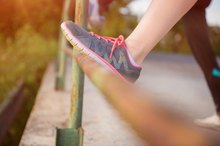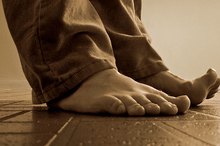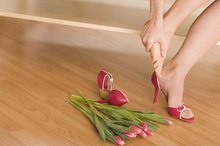The Importance of Arch Support
The arch is perhaps the most important structural feature of our feet, which bear 200,000 to 300,000 lbs. of stress each mile we walk. Arches absorb the brunt of the pressure our bodies thrust upon our feet with each stride. Arch height may vary significantly from person to person. It may also change as a person ages, or as the result of various medical conditions. Properly supporting the arch can prevent a variety of musculoskeletal problems that can lead to inactivity and even disability.
Types of Arches
People with little or no arch can usually observe this by standing in bare feet in front of a mirror--the lack of arch should be obvious if the sole of your foot rests entirely or almost entirely on the floor. If you’re unsure of the shape of your foot relative to what is considered normal, the American Academy of Orthopedic Surgeons recommends trying this simple test: dip the bottom of your foot in water, and take a normal stride over a surface where you’ll be able to make out the footprint left behind. Flat feet with low arches will have little curve from the big toe to the heel, while high-arched feet will leave prints with a skinny strip from the heel to the ball of the foot.
Changes in Arch Shape
Asics Shoes & Hip Bursitis
Learn More
Pregnant women may find that their arches flatten somewhat with the added pressure that weight gain places on their feet. The American Podiatric Medical Association advises pregnant women to choose comfortable shoes with good shock absorption to relieve some of the stress on the foot that a lower arch fails to prevent. They may want to wear over-the-counter molded inserts to provide additional arch support. According to the Arthritis Foundation, people with rheumatoid arthritis may develop a flattened arch, which will require additional support. Age itself may bring about changes in foot shape through fluid retention, relaxing ligaments and the effects of gravity and weight over a lifetime
- Pregnant women may find that their arches flatten somewhat with the added pressure that weight gain places on their feet.
- The American Podiatric Medical Association advises pregnant women to choose comfortable shoes with good shock absorption to relieve some of the stress on the foot that a lower arch fails to prevent.
Pronation
People with low arches may tend to “overpronate,” which means the foot rotates too far inward with each step. Alternatively, a high arch can cause the foot to roll too far outward, or "underpronate." Proper support is important for both types of arches.
Results of Pronation
The Best Shoes for Obese People
Learn More
The extreme inward foot motion caused by pronation forces the knee and hip out of alignment. This movement places added pressure through the knee, shin, thigh, pelvis and back. The excessive foot rotation can lead to foot and ankle injuries, achilles tendonitis, heel pain, kneecap inflammation, bunions, shin splints, ailments of the hip and lower back, as well as injury to muscles, tendons and ligaments in the lower leg.
Proper Arch Support
Support low or high arches with well-fitting, appropriate footwear, particularly for athletic activities--this simple step can help prevent the many problems that can result from over- or underpronation. People with low arches should look for shoes classified as “motion control.” These shoes give added stability on the inside of the foot where the arch tends to collapse, preventing excessive inward rolling. People with high arches should consider “cushioning” shoes--these shoes have a curved shape that encourages the foot to roll more inward.
Orthotics
Some people with especially low or high arches should consider orthotic inserts. A podiatrist or physical therapist can help determine whether custom orthotics are right for you. You can buy less expensive, preformed orthotics at pharmacies and sporting goods stores.
Related Articles
References
- López-López D, Vilar-Fernández JM, Barros-García G, et al. Foot arch height and quality of life in adults: A strobe observational study. Int J Environ Res Public Health. 2018;15(7):pii: E1555. doi:10.3390/ijerph15071555
- Tong JW, Kong PW. Association between foot type and lower extremity injuries: systematic literature review with meta-analysis. J Orthop Sports Phys Ther. 2013;43(10):700-714. doi:10.2519/jospt.2013.4225
- Dufour AB, Losina E, Menz HB, LaValley MP, Hannan MT. Obesity, foot pain and foot disorders in older men and women. Obes Res Clin Pract. 2017;11(4):445–453. doi:10.1016/j.orcp.2016.11.001
- Hume P, Hopkins W, Rome K, Maulder P, Coyle G, Nigg B. Effectiveness of foot orthoses for treatment and prevention of lower limb injuries: a review. Sports Med. 2008;38(9):759-779. doi:10.2165/00007256-200838090-00005
- Zhao X, Wang M, Fekete G, Baker JS, Wiltshire H, Gu Y. Analyzing the effect of an arch support functional insole on walking and jogging in young, healthy females. Technol Health Care. 2018 Nov 9. doi:10.3233/THC-181373
Resources
Writer Bio
Lauren Hutchens specializes in health communications, developing targeted messages for a variety of audiences since 1998. Her publications include health policy analyses, guidance for medical providers, and easy-to-read health education materials. Her work has appeared in "the Washington Fax" and "Health News Daily." She holds a Master of Public Health degree from the University of Washington.








